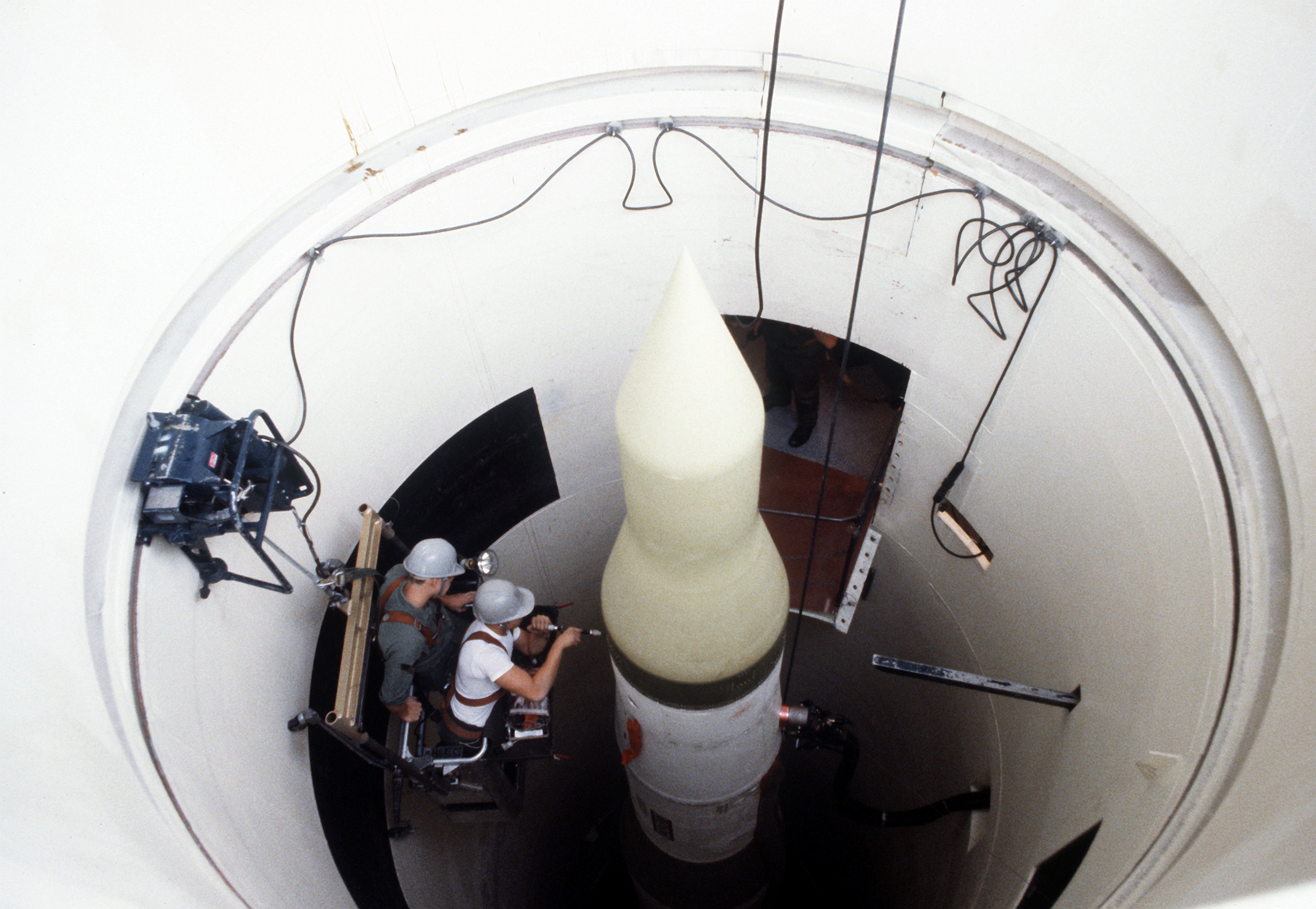Two days ago, I blogged about a "Broken Arrow" or nuclear accident involving the dumping of an early atomic bomb from a U.S. plane over the Inside Passage off the west coast of Canada in 1950. There have been many of these Broken Arrow events over the years involving nuclear weapons from the U.S. arsenal. Fortunately, so far, none of them have resulted in a nuclear explosion but there have been concerns about release of radioactive materials from some of them. Today I am going to talk about another Broken Arrow involving a Minuteman missile in the 1980s.
"The LGM-30 Minuteman is a U.S. land-based intercontinental ballistic missile (ICBM), in service with the Air Force Global Strike Command. As of 2016, the LGM-30G Minuteman III version is the only land-based ICBM in service in the United States." (Wikipedia) The Minuteman missiles use solid fuel because they can be stored for a long time and then launched quickly as opposed to liquid fuel rockets that require a long and complex fueling process. If the U.S. was suffered a nuclear attack or decided to launch a first strike with nuclear weapons, the Minutemen missiles could be launched within about fifteen minutes of a presidential order.
The U.S. had about a thousand Minuteman missiles at the height of the Cold War in the 1970s but that has declined to about four hundred and fifty today. The missiles are stationed in silos at three bases: Malmstrom AFB, Montana; Minot AFB, North Dakota; and F.E. Warren AFB, Wyoming. The silos are vertical cylindrical structures built underground for storing and launching the missiles. They are controlled from a missile launch control center that is either physically or electronically connected to the silo.
The Minuteman silos have a ninety ton blast door that covers the top of the silo. When the missile in the silo is ready to be launched, explosive bolts fire and slide the blast door horizontally off the top of the silo. There is a procedure for launching the missiles that requires that proper codes be entered by operators and that two operators simultaneously turn physical keys inserted into the control console.
In 1984, a Minuteman missile with three nuclear warheads in a silo at the Warren AFB began sending out signals that it was preparing to launch. There had been no action by the launch officers and it was unclear exactly what was happening. Fearing that the missile would actually launch itself, the missile crew tried to find a way to block the launch. They decided that it might be possible to physically block the missile from leaving the silo.
In order to block the launch, they had to put something on top of the blast doors. The heaviest object that was immediately available was an armored vehicle. They drove the vehicle onto the top of the blast door over the silo and left it in neutral. Their hope was that if the explosive bolts were detonated and the door shoved off the top of the silo, the heavy armored vehicle would remain in position as the door slid out from beneath it. If the vehicle did remain in position, then the missile would slam into it during launch and be stopped from flying into the air. It was a desperate action that may or may not have succeeded.
Fortunately, it turned out that the signals from the missile were caused by electronic problems and there was actually no chance that the missile would have launched.
Technicians working on a Minuteman missile in silo:
